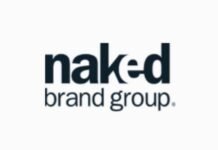Human Resource Accounting (HRA) is a valuable tool for organizations to quantify the value of their human capital. However, it comes with its set of limitations that can hinder its effectiveness. Understanding these limitations and implementing strategies for improved measurement is crucial for HR professionals seeking to leverage HRA effectively. In this blog, we explore the Limitations of Human Resource Accounting, the impact of these limitations, and strategies for overcoming them through Human Resources Training Courses and improved measurement techniques.
Table of Contents
- Understanding the Limitations of Human Resource Accounting
- The Impact of Limitations on HR Accounting
- Strategies for Overcoming Limitations through Improved Measurement
- Conclusion
Understanding the Limitations of Human Resource Accounting
Several issues with human resource accounting may affect its relevance and accuracy. The challenge of putting a number on the worth of human capital is one of the main restrictions. Human capital, which includes abilities, knowledge, experience, and potential, is an intangible and diverse asset as opposed to physical assets like machinery or equipment. It is fundamentally subjective and liable to change depending on organisational conditions and human views to assign a monetary value to these traits.
The dependence on past cost data is another drawback. To calculate the value of human capital, human resource accounting often uses past costs—such as those associated with hiring and training—instead of current expenditures. Meanwhile, this strategy could not consider how human capital evolves, with skills and abilities subject to change. Because of this, previous cost data could not fairly represent the worth of human capital today, which might cause falsification of financial reports and decision-making procedures.
The Impact of Limitations on HR Accounting
Organisations may face serious consequences due to the shortcomings of human resource accounting. Incomplete or inaccurate assessments of the worth of human capital may result in poorly informed decisions about the distribution of resources, talent management, and strategic planning. It may also impact the company’s capacity to evaluate its competitive standing, pinpoint talent shortages, and create winning human resource plans.
Strategies for Overcoming Limitations through Improved Measurement
Organisations may utilise several initiatives to enhance measuring methods and procedures to get around the drawbacks of human resource accounting. Among these tactics are:
Adopting a Multi-dimensional Approach: Organisations can adopt a multi-dimensional approach to human resource accounting instead of relying solely on financial metrics. This method includes calculating the worth of human capital by considering several variables, including performance, potential, competencies, and abilities. Organisations: By integrating a wider variety of measures, organisations may get a more thorough picture of their human capital and how it contributes to their performance.
Utilising Advanced Analytics: Leveraging advanced analytics and data-driven techniques can enhance the accuracy and reliability of human resource accounting. By examining extensive datasets about worker performance, skill evaluations, and labour market patterns, establishments may understand the worth of their human resources. Thanks to this data-driven strategy, organisations can allocate resources and manage personnel more intelligently.
Incorporating Qualitative Assessments: In addition to quantitative measurements, organisations can benefit from incorporating qualitative assessments into their human resource accounting processes. Qualitative evaluations, which include talent appraisals, performance reviews, and employee surveys, provide important insights into employees’ potential, engagement, and happiness. Organisations: By merging quantitative and qualitative data, organisations may better understand their human capital and how it affects performance.
Continuous Learning through Human Resources Training Courses: HR professionals can benefit from continuous learning through human resources training courses focused on advanced measurement techniques. Professionals may have access to the newest instruments, techniques, and best practices for efficiently assessing the value of human capital via these courses. HR practitioners may improve their abilities and help the organisation’s human resource accounting procedures by keeping up with industry trends and changes.
Conclusion
While human resource accounting has limitations, organisations can overcome these challenges through improved measurement techniques and continuous learning. Organisations may improve the precision and applicability of their human resource accounting procedures by implementing a multifaceted strategy, using sophisticated analytics, adding qualitative evaluations, and funding human resources education programmes. By doing this, they will be able to make wise choices that will promote organisational success and have a greater understanding of the worth of their human resources.

































